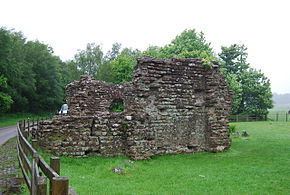Founded c.122 Excavation dates 1976-8 Region Britannia Period Roman Empire | Public access yes Excavation date 1976 | |
 | ||
Type Fortification and settlement | ||
Glannoventa is a consensus form of the Latin place-name for a Roman fort that appeared as Clanoventa in the 2nd century Antonine Itinerary, Glannibanta in the 4th century Notitia Dignitatum, and Cantiventi in the 6th century Ravenna Cosmography. Its location at Ambleside is now generally accepted, but one can still read dissenting views that identify it with the naval base at Ravenglass, Cumbria, England.
Contents
Ravenglass was almost certainly Tunnocelum, a name mentioned in the Notitia Dignitatum. An infantry unit of the Roman army, apparently based at the fort in the year 158 was the First Cohort Aelia Classica, where ‘Aelius’ was the family name of the Emperor Hadrian, while ‘Classica’ is derived from the Latin classis ‘fleet’, suggesting that the soldiers were recruited from the fleet in Hadrian’s time (117 to 138).
Apart from the extra-mural bath house (discussed below), little survives of the fort. A railway line was built through it in the nineteenth century, and one end has been affected by coastal erosion.
A Roman Road led inland via Hardknott and other sites named in the Ravenna Cosmography.
Roman Bath House
The walls of a bath house survive to a height of 4m and include bricked archways. This building was constructed to the north east of the fort. It is under the care of English Heritage.
Vicus
A project to excavate the vicus ("the civilian area to the east of the fort") began in 2013. It has concentrated on areas identified in a geophysical survey.
